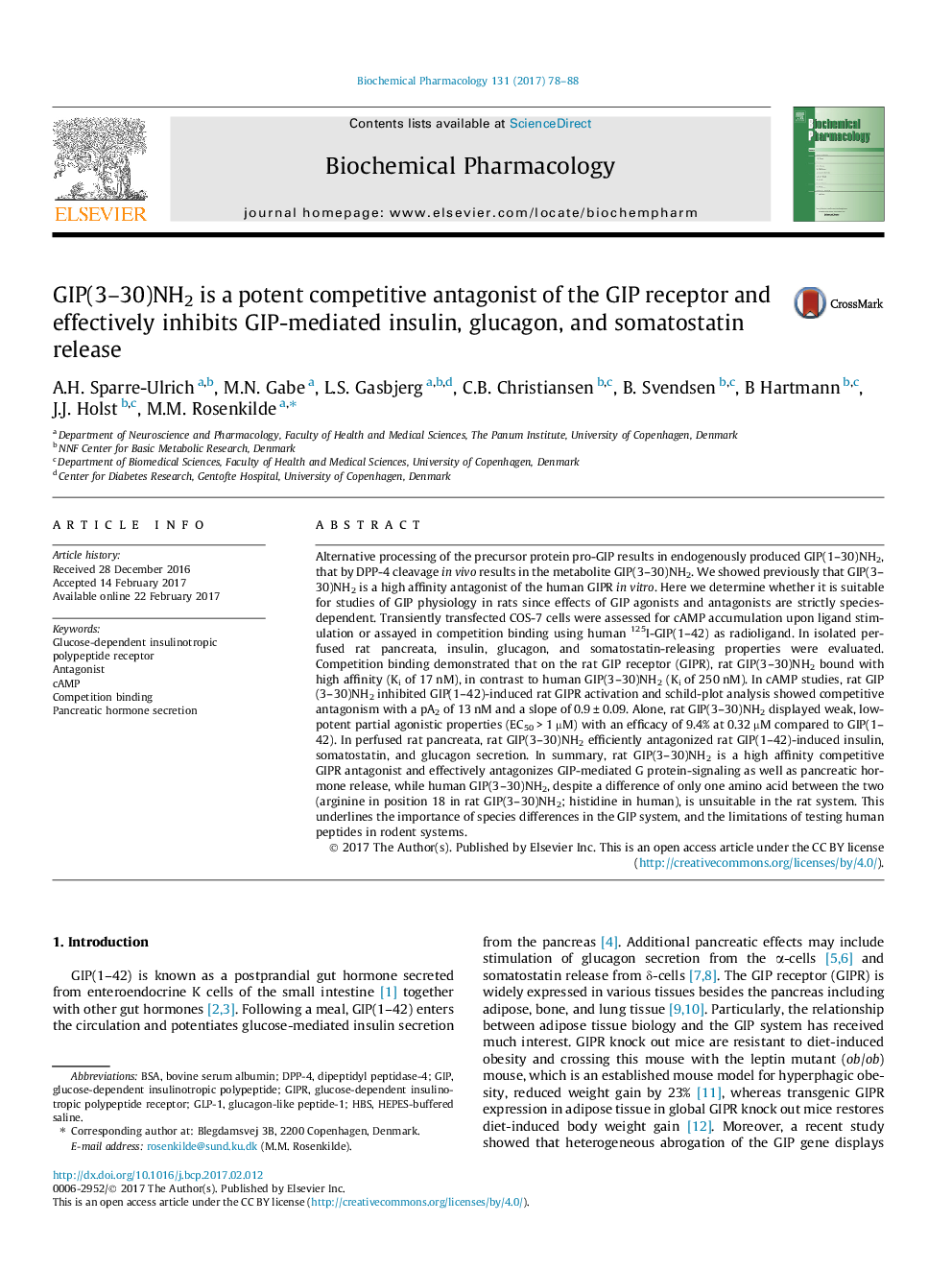| کد مقاله | کد نشریه | سال انتشار | مقاله انگلیسی | نسخه تمام متن |
|---|---|---|---|---|
| 5552223 | 1557882 | 2017 | 11 صفحه PDF | دانلود رایگان |

Alternative processing of the precursor protein pro-GIP results in endogenously produced GIP(1-30)NH2, that by DPP-4 cleavage in vivo results in the metabolite GIP(3-30)NH2. We showed previously that GIP(3-30)NH2 is a high affinity antagonist of the human GIPR in vitro. Here we determine whether it is suitable for studies of GIP physiology in rats since effects of GIP agonists and antagonists are strictly species-dependent. Transiently transfected COS-7 cells were assessed for cAMP accumulation upon ligand stimulation or assayed in competition binding using human 125I-GIP(1-42) as radioligand. In isolated perfused rat pancreata, insulin, glucagon, and somatostatin-releasing properties were evaluated. Competition binding demonstrated that on the rat GIP receptor (GIPR), rat GIP(3-30)NH2 bound with high affinity (Ki of 17 nM), in contrast to human GIP(3-30)NH2 (Ki of 250 nM). In cAMP studies, rat GIP(3-30)NH2 inhibited GIP(1-42)-induced rat GIPR activation and schild-plot analysis showed competitive antagonism with a pA2 of 13 nM and a slope of 0.9 ± 0.09. Alone, rat GIP(3-30)NH2 displayed weak, low-potent partial agonistic properties (EC50 > 1 μM) with an efficacy of 9.4% at 0.32 μM compared to GIP(1-42). In perfused rat pancreata, rat GIP(3-30)NH2 efficiently antagonized rat GIP(1-42)-induced insulin, somatostatin, and glucagon secretion. In summary, rat GIP(3-30)NH2 is a high affinity competitive GIPR antagonist and effectively antagonizes GIP-mediated G protein-signaling as well as pancreatic hormone release, while human GIP(3-30)NH2, despite a difference of only one amino acid between the two (arginine in position 18 in rat GIP(3-30)NH2; histidine in human), is unsuitable in the rat system. This underlines the importance of species differences in the GIP system, and the limitations of testing human peptides in rodent systems.
155
Journal: Biochemical Pharmacology - Volume 131, 1 May 2017, Pages 78-88